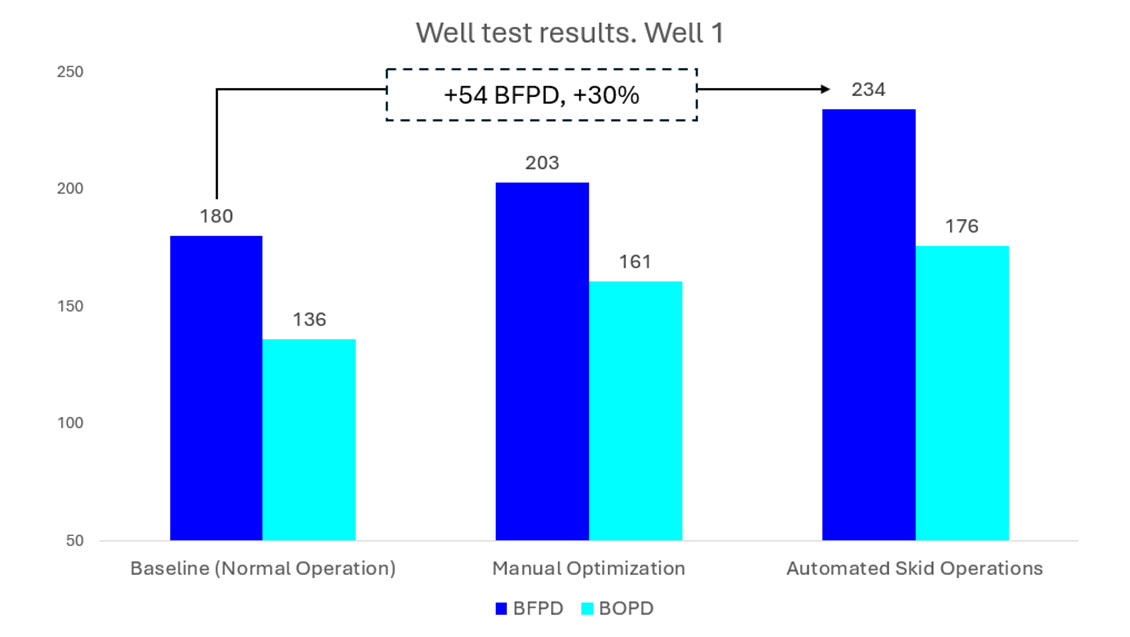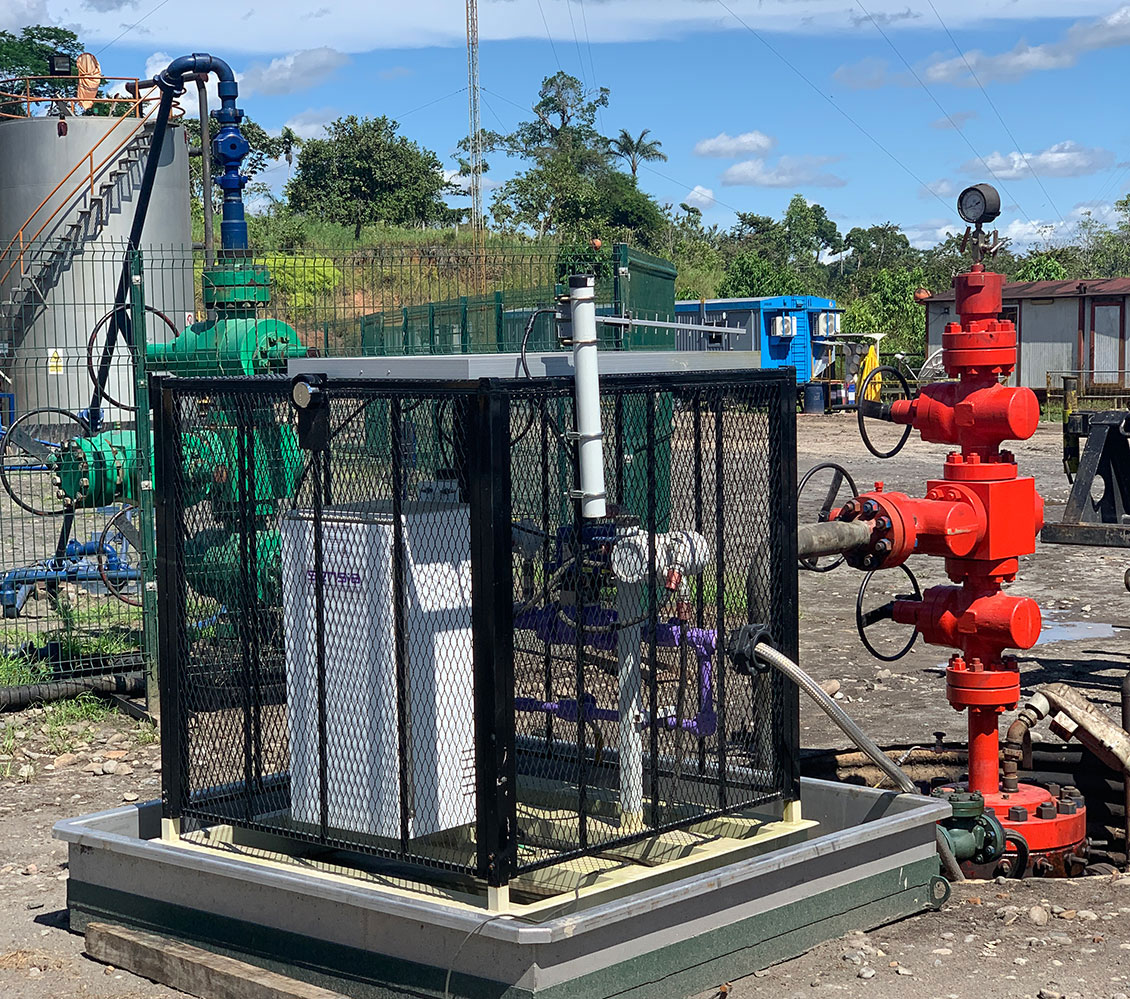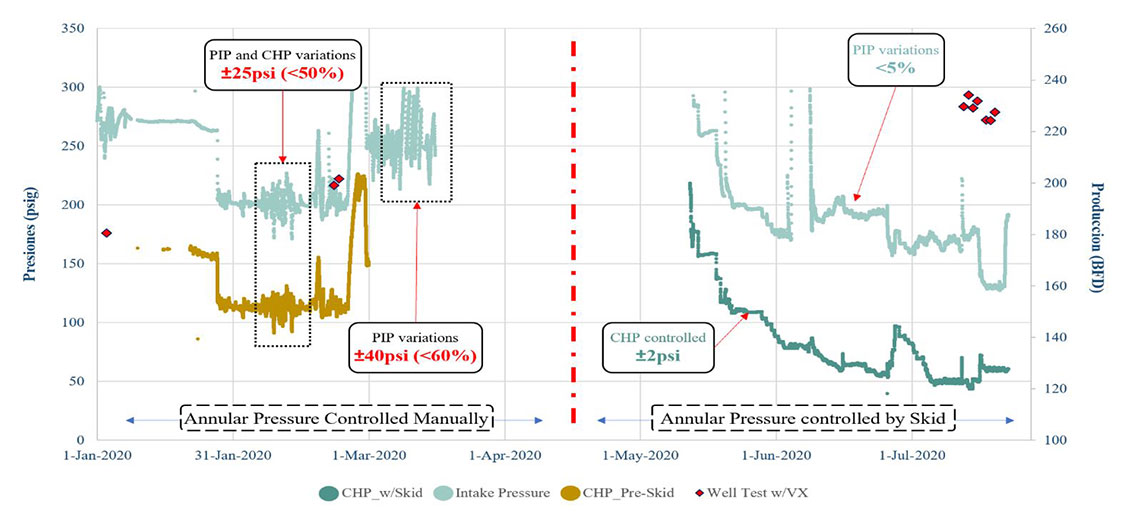Well production optimization through annulus gas management using gas handling system in Ecuador
Significant improvements in oil production and operational efficiency were seen in Ecuador after implementing of an automated annular gas handling system (AGHS). Oil production increased by 12% to 30% per well, oil losses were reduced by eliminating operational shutdowns, and ESP run life was extended. Additionally, the AGHS reduced personnel movement by 87%; this helped achieve a decrease in average CO2 emissions of 1.02 tons per month and achieved a net present value (NPV) of 2.1 million USD with a 79% internal rate of return (IRR).

The Asset Monitoring Center (CMA) is a facility dedicated to continuously monitoring the field through remote visualization of equipment parameters, such as ESPs. The platform provides alerts and insights for the engineering team to act based on equipment behavior. One of the critical alerts is the increase in pump intake pressure (PIP) due to gas blockage in the pumps, which can lead to oil production losses. To address this, actions are taken to restore normal well conditions.
At the project’s outset, maintaining production involved manually adjusting the annular valves to release gas. This process required an operator to physically go to the well pad and optimize the well based on the alerted anomalous ESP behavior. However, manual valve adjustments can result in long response times due to the unavailability of personnel and the time needed to travel to the well. The field's size, logistics, and operational conditions made manual gas management inefficient. Additionally, the operator could not view or analyze any trend responses resulting from the changes.

Therefore, this project aimed to properly identify the alerted problems, develop an automated solution, and conduct field tests in the wells. A test protocol and KPIs were defined to evaluate and analyze the AGHS’s success
Digital oil field projects have been successfully implemented worldwide, demonstrating their value by reducing losses and optimizing oil production. This AGHS implementation is a prime example, featuring an autonomous system that regulates casing head pressure to achieve higher production efficiency with lower energy demand.
The project’s first stage involved problem identification, during which data was gathered to select and develop the optimum solution. Wireless pressure sensors were installed in the wells to measure casing head pressure, tubing head pressure, and flow line temperature. These sensors were connected to a gateway, linked to the ESP. The gateway acts as the system’s "brain", transmitting information and giving instructions to the skid for smooth valve operation. This setup enabled real-time monitoring from the Asset Monitoring Center.

The AGHS is designed to control valve openings precisely based on collected and analyzed data. Its components include a solar panel, radio, scanner 31000, batteries, choke gas lifting metering valve (GLMV), orifice plate flowmeter, and gas hoses. The system’s main task is to regulate the gas outlet through an automatic valve, either manually or automatically, to maintain the set point pressure.
By automatically controlling annulus pressurization, the AGHS helps manage wells with gas accumulation issues in the annulus. It stabilizes the ESP pump intake pressure (PIP) and improves pump efficiency and run life, maximizing production while maintaining safe operating ranges and avoiding gas blockages.
The AGHS increased oil production in the field by reducing losses by 12% to 30% per well. It also reduced oil losses due to operational shutdowns of the ESP caused by gas-related issues. The ESP now operates more efficiently under controlled annular gas conditions, with less fluctuation of the intake pressure (+/-5%). This results in fewer cyclic loads on the ESP, minimizing potential fatigue failure and avoiding workover costs—due to fewer ESP failures caused by high temperatures, lack of fluid levels, or stuck stages.
The system enables real-time monitoring and remote actions through automation technology, increasing personnel efficiency and reducing risk exposure associated with logistics and well-area dangers. Continuous measurement with Vx™ multiphase well testing technology has helped quickly and accurately identify optimizations already implemented in wells with the AGHS.
Overall, the implementation of the AGHS has delivered significant improvements in production and operational efficiency. The production of wells increased by 7% due to the control, stabilization, and optimization provided by the gas skid. Personnel movement was reduced by 87%, and valve intervention on-site was decreased to less than 10% compared to initial levels. The variation in PIP was decreased to less than 10%, providing a better environment for ESP performance. Additionally, CO2 emissions were reduced by an average of 1.02 tons per month in 2024.
Related resources
-

Living Digital Series
Transforming the energy industry performance and driving decision making at speedBrilliant minds from upstream oil and gas share their experiences and discuss project successes using digital solutions to solve everyday challenges.
-

Multiclient Data Library
Accelerate Hydrocarbon DiscoveryOur world-leading, evergreen multiclient library provides critical subsurface insight to help you make the most informed decisions.
-

Living Digital: Accelerating regional exploration with machine learning for offshore Kwanza
The interpretation of horizons is one of the most tedious tasks in regional exploration studies—but it doesn’t need to beThe interpretation of horizons is one of the most tedious tasks in regional exploration studies—but it doesn’t need to be.
